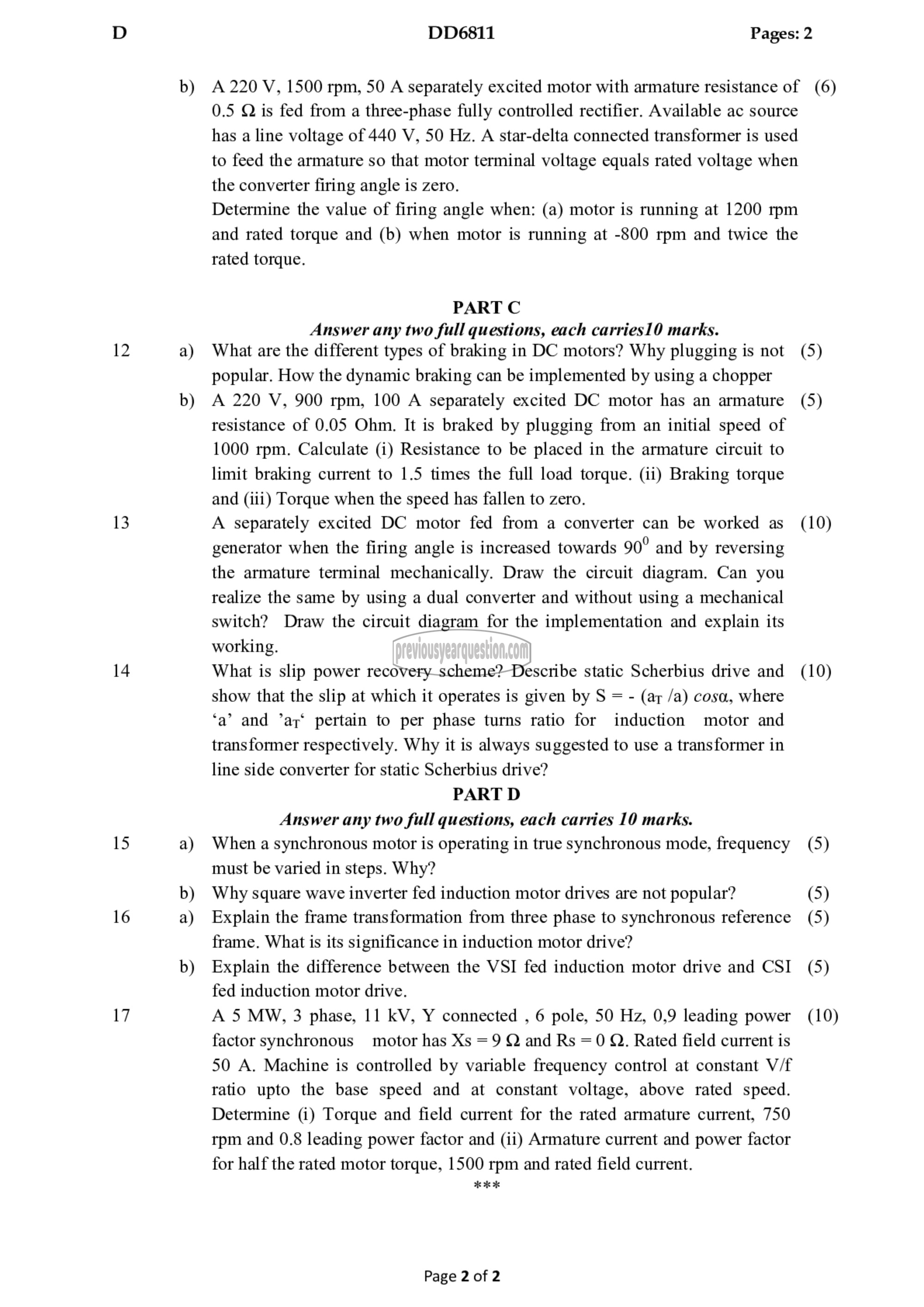APJ ABDUL KALAM TECHNOLOGICAL UNIVERSITY Previous Years Question Paper & Answer
Semester : SEMESTER 6
Subject : Electric Drives
Year : 2018
Term : APRIL
Scheme : 2015 Full Time
Course Code : EE 308
Page:2
12
13
14
15
16
17
DD6811 Pages:
2
b) A220 ५, 1500 rpm, 50 A separately excited motor with armature resistance of (6)
a)
b)
0.5 Q is fed from a three-phase fully controlled rectifier. Available ac source
has a line voltage of 440 V, 50 Hz. A star-delta connected transformer is used
to feed the armature so that motor terminal voltage equals rated voltage when
the converter firing angle is zero.
Determine the value of firing angle when: (a) motor is running at 1200 rpm
and rated torque and (b) when motor is running at -800 rpm and twice the
rated torque.
PART C
Answer any two full questions, each carries10 marks.
What are the different types of braking in DC motors? Why plugging is not
popular. How the dynamic braking can be implemented by using a chopper
A 220 V, 900 rpm, 100 A separately excited DC motor has an armature
resistance of 0.05 Ohm. It is braked by plugging from an initial speed of
1000 rpm. Calculate (i) Resistance to be placed in the armature circuit to
limit braking current to 1.5 times the full load torque. (ii) Braking torque
and (iii) Torque when the speed has fallen to zero.
A separately excited DC motor fed from a converter can be worked as
generator when the firing angle is increased towards 90° and by reversing
the armature terminal mechanically. Draw the circuit diagram. Can you
realize the same by using a dual converter and without using a mechanical
switch? Draw the circuit diagram for the implementation and explain its
working.
What is slip power recovery scheme? Describe static Scherbius drive and
show that the slip at which it operates is given by S = - (ar /a) cosa, where
‘a’ and "മ് pertain to per phase turns ratio for induction motor and
transformer respectively. Why it is always suggested to use a transformer in
line side converter for static Scherbius drive?
PART D
Answer any two full questions, each carries 10 marks.
When a synchronous motor is operating in true synchronous mode, frequency
must be varied in steps. Why?
Why square wave inverter fed induction motor drives are not popular?
Explain the frame transformation from three phase to synchronous reference
frame. What is its significance in induction motor drive?
Explain the difference between the VSI fed induction motor drive and CSI
fed induction motor drive.
A 5 MW, 3 phase, 11 kV, Y connected , 6 pole, 50 Hz, 0,9 leading power
factor synchronous motor has Xs = 9 Q and Rs = 0 62, Rated field current is
50 A. Machine is controlled by variable frequency control at constant V/f
ratio upto the base speed and at constant voltage, above rated speed.
Determine (i) Torque and field current for the rated armature current, 750
rpm and 0.8 leading power factor and (ii) Armature current and power factor
for half the rated motor torque, 1500 rpm and rated field current.
ಸೇ मद मंद
Page 2 of 2
(5)
(5)
(10)
(10)
(5)
(5)
(5)
(5)
(10)
